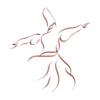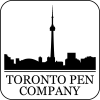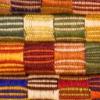Search the Community
Showing results for tags 'lessons'.
-
Learning Copperplate As promised, I am adding my Copperplate lessons here. We will start our study of Copperplate with the small letters i.e. the minuscules. I have divided the minuscules into four groups. The first three groups are based on strokes common to the group. The last group contains the letters that do not share a pattern with other letters - these are the misfits. The process is that students will study each lesson, do their practice and submit the assigned words for feedback. Students move on to the next group only when sufficiently proficient with the current one. Each group will have it's own thread so things don't get mixed up. We will need some materials before we start. I always recommend using the best materials you can afford for practice. The time we spend practicing is our most valuable asset. It does not make sense to waste a second of it fighting with uncooperative paper or ink that doesn’t flow well. Here is what I recommend: Ink: I will start with ink because it determines the other materials to some degree. I know the following to work well: Higgins Eternal with a few drops of Gum Arabic. Walnut ink (can be bought in liquid form or as crystals that are dissolved in water to make ink). Pelikan Black with a good dollop of Gum Arabic - experiment to find what works best for you. Noodler’s Black with a good amount of water added. Fountain pen inks contain surfactants which sometimes causes the ink to slide off the nib in an uncontrollable manner. The last two inks on my list are fountain pen inks but work well with pointed pens in my experience. Please feel free to experiment with other inks but stay away from pigmented inks like Sumi or India. These can be made to work well with pointed pens but I don’t think it is worth the effort to fiddle with these inks when one is learning. Paper: The paper you use should be smooth and should be able to take the ink you have chosen to work with. Higgins Eternal has a higher tendency to bleed than the other inks but it flows well. Some experimentation will be needed here. Also, I recommend printing the guidelines on the paper you will be writing on. It makes a big difference over placing printed guidelines underneath the paper you are writing on. The paper you choose should be suitable for printing guidelines on the type of printer you have. You can use paper with pre-printed lines on it e.g. Rhodia pads. Please make sure the lines are at least 6mm apart though. On such papers you will only need the slant lines. We will be writing Copperplate at the traditional 55 degree angle from the baseline. You can either draw these on your paper or place a printed sheet with just the slant lines underneath. Nib(s): We will be writing the minuscules at ¼ inch x-height i.e. letters without ascenders or descenders will be ¼ inch tall. We will need a nib that can handle writing at that size. I can recommend the following: Speedball Hunt 101. These are commonly available in art stores and work very well. Speedball Hunt 22. These are stiffer than the 101’s and a bit smoother. These work well for people who find the 101 difficult to use. Brause 66EF. These are easily available online and in some stores. This is very small nib but has more than enough flexibility for our purposes. It works well with inks that might be problematic with other nibs. Because of it’s small size, it needs a specially adjusted holder. Leonardt Principal EF. This is an excellent nib and could have been at the top of the list. I have placed it at no.3 because it requires a delicate hand to get the best performance from it. Also, there have been reports of loss of quality lately (new nibs turning out bad). Gillot 303. This is also an excellent nib but can be hard to use as it requires a delicate touch on the up strokes. There have been quality issues with this nib too but reportedly Gillott has invested in new tooling that will take care of these issues. Nibs produced with the new tooling are expected to be available in a few months from the time of this writing (May, 2016). Various G nibs are very popular and often recommended for beginners because of their forgiving nature. These are excellent nibs but are a bit too stiff for writing at the size we will be practicing with. By all means get some (my favourite is the Zebra G) to play with. You will definitely find a use for it outside of these lessons - or for practicing Copperplate at a smaller size. Holder(s): Oblique holders are usually recommended (but not absolutely necessary) for right handed people. I use one and do recommend it highly. However, you can write Copperplate with a straight holder if you want. You will need to turn the paper so that the slant lines are lined up with the direction of your holder shaft. The goal is to allow the nib to spread evenly on both sides of the shade on the down strokes. Left handed people, if they are underwriters, can use a regular oblique holder (like the one used by right handed people) and write with the paper turned clockwise between 40 and 60 degrees. It is difficult to draw the hairlines as upstrokes using a straight holder. One of the advantages of an oblique holder is that it presents the nib at a shallow angle to the paper. This helps sharp nibs make smooth hairlines on the upstroke without catching on the paper. In my opinion, this is a big enough advantage to consider using one - even for left handed scribes. Left handed oblique holders are available but I believe a regular one works better for left handed calligraphers. Guidelines: As mentioned above, we will be using ¼ inch x-height. I have prepared the guidelines in 2 sizes, A4 and US Letter. Both are attached to this post as pdf files. Please download the appropriate one and print it out on the paper of your choosing. The illustration shows how the guidelines are laid out. The traditional proportions for Copperplate are 3:2:3 i.e. the ascenders and descenders are 1.5 times the x-height. However, at the ¼ inch x-height we are using, the ascenders will be hard to draw at those proportions. We will be drawing our ascenders and descenders at 1 times the x-height. Some exceptions apply though and will be noted as we go along. http://thesixapp.com/smk/CopperplateLessons/Copperplate-Guidelines-Explained.gif Copperplate Minuscules - Group 1 OK - enough about the preparation. Let's get started with some Copperplate. The first group of letters we will be working are based on the ‘i’ stroke i.e. the stroke that makes up the letter ‘i’. The ‘i’ stroke starts at the waist line and goes down to the base line. The stroke is started at full shade (i.e. the full thickness of the letter) and drawn at this thickness down ⅔ rds of the way down. As the illustration shows, pressure is released in the last third while simultaneously moving the pen to the right. This causes the right tine of the nib to keep drawing a straight line down while the left tine closes down making an arc as the tines come together at the base line. This is where you stop. Pick up the pen off the page and put it back down to start the hairline stroke that will connect to the following letter if there is one. http://thesixapp.com/smk/CopperplateLessons/structure-i.gif The picking up of the pen ensures that the bottom of the shade comes to a point as well as avoids pulling excess ink into the hairline. Here is the group of letters based on the ‘i’ stroke: http://thesixapp.com/smk/CopperplateLessons/CuPl8-group1.gif i - Start with a hairline at the base line and go up to the middle of the x-height or slightly above - this is the entry hairline. Now place the pen at the waist line and apply pressure to the nib to spread the tines and pull down towards the base line. The stroke should be placed such that it meets the entry hairline halfway down the stroke. Gradually release the pressure on the nib two-thirds of the way down while moving the pen to the right bringing the stroke to a point on the base line directly below the right side of the stroke. This will cause the left side of the stroke to have a curved shape. Now lift the pen for a beat, put it back down and draw the hairline back up to the middle of the x-height, this is the exit hairline. The dot is placed directly above the ‘i’, halfway between the waistline and the the 1st Ascender line. It is the same thickness at the letter - no more. You can go back and make the top of the starting stroke ‘square’ now. In time, you will learn to square the tops directly at the start of the stroke but there is no need to spend time on it at this time. It is worth your while to practice this stroke until you can do it without thinking. The best way to do that is to use Mr. Geoff Ford’s method of practicing in groups of 5. Here is how you do it: Write the letter 5 times. Now stop and look at each letter you have drawn and place a tick mark against ones that are good. Now pick the best one and try to replicate or improve on it 5 more times. Repeat. This process not only take the boredom out of the practice, it helps sharpen the eye in the process. Once you can see what a good letter is, making it well is just a short distance behind. So when do you know when you have it? When you can consistently make 3-4 out good ones in a group of 5. u - All that practice with the ‘i’ will come in use here. The ‘u’ is nothing more than two ‘i’s written next to each other i.e. the exit hairline of the first ‘i’, is the entry hairline of the second. All done. w - The ‘w’ is just a ‘u’ with the exit stroke drawn all the way up to the waist line. The ‘blob’ in the end comes ⅓ of the way down and back up to the waistline, or the following letter if there is one. You can draw the blob without any pressure on the nib and then fill it in - or you can make it one go if you feel like it. Please note that the hairline stroke becomes pretty much parallel to the main stroke as it reaches the waistline - it does not curve back into the letter. t - Now things are getting interesting. The ‘t’ is drawn like an ‘i’ that starts halfway between the waistline and the 1st Ascender line and goes down to the baseline. The tapering at the bottom is the last third of the ‘i’ part of the letter so if you cover the tops, the bottoms of the ‘t’ and the ‘i’ would look the same. The crossbar is drawn halfway between the top of the letter and the waistline. l - This is beginning to feel like cheating now. The ‘l’ is just and ‘i’ that starts at the 1st Ascender line and goes all the way down to the baseline. As with the ‘t’, the tapering at the bottom should match that of an ‘i’. b - The ‘b’ is an ‘l’ that is finished like a ‘w’ i.e. the exit stroke it taken all the way to the waist line and then the blob is drawn. j - Things were getting a bit repetitive with the ‘i’ stroke so we will play with something a little different. The ‘j’ is not strictly based on the ‘i’ stroke but it begins like one. It is used in a few other letters so practising it with the first group will pay dividends later. You start just like with the ‘i’ but keep moving down at full thickness through the baseline. As you move below the baseline, start to taper your stroke towards the right gradually until you come to a point at about the 1st Descender line. Continue to draw the stroke as you go a little (about 1/3rd) below the 1st Descender line and come around to form the bowl of the letter and go up to join the downstroke just below the baseline where you lift the pen. The exit stroke continues on the right side of the downstroke as a hairline. The reason you pick up your pen is to avoid drawing excess ink into the hairline exit stroke from the still wet downstroke. The dot is placed above the main stroke just as in the ‘i’. This completes our first group. Take your time with it. When satisfied with your work, post the following words for review: ill, will, built, jilt and a word of your choice made up of these letters. A note about joins: This is the standard join when the hairline exiting at the baseline joins the following letter at mid-height between the base and waist lines. This is the simplest join. http://thesixapp.com/smk/CopperplateLessons/joins/till.jpg Care should be taken to make the join as seamless as possible. Leaving a very small gap (as in the first hairline before the ‘t’) helps to avoid ink from the following shaded stroke bleeding into the hairline. This is quite acceptable although the gap in this example is a bit too big. The exit hairline should be nearly in line with the slant lines at mid-height. This ensures that the join with the following letter is seamless. The second type of join in Group-1 is from letters that end at the waist line. http://thesixapp.com/smk/CopperplateLessons/joins/wit.jpg These letters (‘w’ and ‘b’) end with a blob at the top of the final stroke. This blob is drawn about ⅓ of the way down from the waist line and a looping connector is drawn to the following letter. The bottom of the loop is about halfway between the waist and base lines allowing a join to the following stroke a little below the waist line. This join is slightly steeper than the ones starting at the base line but the transition can still be made smooth by drawing the hairline loop in such a ways that it matches the slant of the letters at the place where it joins the following stroke. Video Demonstration I made a short video demonstrating the letters in this group with the exception of the 'j'. I will add that in the future. You can find the video here: Copperplate Lessons - Group 1 I made a separate video for the 'j' stroke as I also wanted to tackle the 'g' and 'q' at the same time. You can view it here: Copperplate Lessons - j, g & q Copperplate-qtr in-US Letter.pdf Copperplate-qtr in-A4.pdf
- 2 replies
-
- copperplate
- tutorial
-
(and 1 more)
Tagged with:
-
Hi all, I am very excited to announce that I will be offering a 6-week calligraphy course in Toronto in partnership with Wonder Pens. This course will focus on the fundamentals of broad pen calligraphy and will include instruction as well as projects to develop both skill and understanding. Classes will be held from 6:30 p.m. to 9:30 p.m. every Wednesday starting October 28th. The classwork will be supported by a private forum where participants can upload their homework (yes, there will be homework) and ask questions. My goal for this course is for the participants to develop command of at least one hand (both Majuscules and Minuscules) along with understanding the fundamentals of broad pen calligraphy. Projects include exercises in development of a new hand as well as composing newspaper headlines. I expect the course to be both fun and a learning experience. More detail are on the Wonder Pens Blog. I hope to see at least a few FPN'ers in class. Regards, Salman
-
Does anyone know which three tine nib is the one in this series of videos? Thanks!
- 8 replies
-
- lloyd reynold
- italic
-
(and 2 more)
Tagged with:



